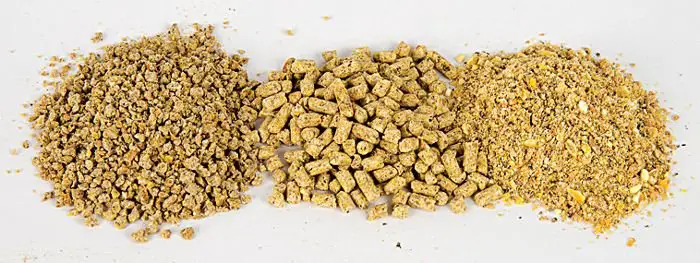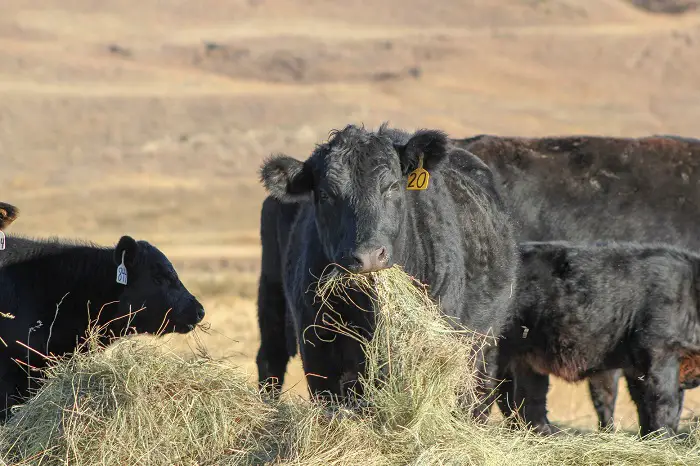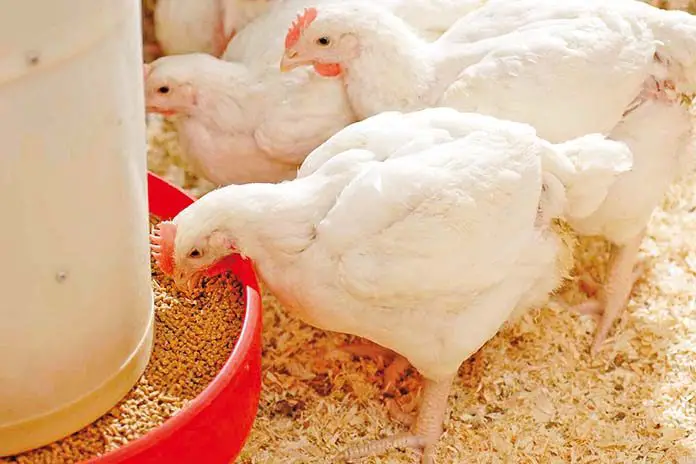Sheep have developed a digestive system that is able to digest coarse, and high-fiber forages to extract all the nutrients they need, this is due to a symbiotic relationship with microorganisms present in their gut. Sheep are ruminants, which means that have four-chamber stomachs, forage is chewed into smaller pieces, mixed with saliva, and swallowed. In the stomach or rumen, the feed is mixed with gut bacteria which help break down the forage, which is then regurgitated and chewed again. This whole process helps to break down the fiber by creating a balance in the rumen, where the bacteria thrive. The feeding of grains helps supply carbohydrates easier to the sheep but care should be taken as grains are easier to digest than forages which can easily upset the microbial balance in the rumen causing bloating or other digestive problems that could kill sheep.
Contents
Type of Grains for Sheep
As discussed above sheep, being ruminants means that they basically ferment the forage in their gut to extract the carbohydrates that it needs for energy. Grains for sheep should be classified as concentrates rich in energy and low in fiber, this will determine which grains are best and how they are fed to sheep. The best grains for sheep are those that can be fed without upsetting the rumen microbe population and ultimately normal digestion. The ultimate goal of feeding grain to sheep is to achieve higher growth grains in the shortest time period. However, the introduction of grain to sheep needs to be done slowly so that the microorganisms in the sheep’s gut have time to adjust to the grain. The choice of which grains are best for sheep is determined by starch, fiber content, region, supply, and price of the grain.
The following grains are ideal for feeding sheep:
-
Oats
Oats are high in fiber and can be fed to sheep of all ages depending on how they are processed before, feeding. For younger sheep, they might need to be processed before feeding for them to be digested properly. Oats having this higher fiber content means that they can be fed safely at higher levels than barley and wheat.
-
Wheat
Wheat is midway between oats and barley in terms of fiber and starch content and can be fed to all classes of sheep, however, there is huge completion for wheat grain with humans that makes wheat not economically viable to feed to sheep. Most wheat fed to sheep is under grade wheat not suitable for baking, this has however shown to have similar results as first-grade wheat. It is slightly higher in protein than oats and barley but considerably higher than maize.
-
Barley
Barley is quite high in starch and it is advisable to feed barley whole and unprocessed so that the sheep can chew the grain for a long time allowing it to mix with saliva which will help prevent it from fermenting too quickly in the gut.
-
Sorghum
Sorghum is a very hardy grain crop that is able to thrive in very harsh climatic conditions, with a feeding value very close to maize when fed to sheep. The tannins present in bird-resistant red sorghum have been shown to reduce bloat and improve the meat quality of sheep. The reduced digestibility due to tannins can however result in large amounts of starch escaping the rumen and being wasted in feces. Sorghum can be fed whole or processed with no challenges in lambs and grown sheep.
-
Maize/ corn
Maize is by far the most palatable, suitable, and available grain for sheep, with a high starch content, low fiber, and low protein level. The low fiber and large starch content unfortunately make maize easily digestible in the sheep gut causing bloating and acidosis. When feeding maize to sheep some level of processing is required, like milling because whole maize will pass through the gut undigested. Whole corn ears can also be ground and fed to sheep to provide some additional fiber for the sheep. Steam flacking high moisture maize has been shown to also give good results in fattening growing sheep.
Table 1: Typical Nutritional Analysis of Grains For Sheep
| Grain | Crude Fiber (%) | Crude Protein (%) | Starch (%) | Energy (Mj/Kg) |
| Barley | 5.2 | 12.0 | 59.7 | 18.4 |
| Maize/Corn | 2.5 | 8.0 | 73.4 | 18.7 |
| Millet | 5.7 | 8.9 | 17.7 | |
| Oats | 13.9 | 11.0 | 40.6 | 19.5 |
| Rye | 2.2 | 10.3 | 62.2 | 18.0 |
| Sorghum | 2.8 | 10.8 | 74.5 | 18.8 |
| Wheat | 2.6 | 12.6 | 69.1 | 18.2 |
Once the ideal grain has been identified, there is a question on whether to feed the grains processed or whole, this is determined by the grain type and age of the sheep. Oats can be fed whole or processed to young sheep but will be better utilized processed because of the high fiber content, which makes them a bit harder to break down in younger animals.
Processed or Whole
The question of whether to feed grain whole or processed largely depends on the grain itself and its’ ease of digestion. The easier it is to digest, the less processing it will need, however some processing methods like roasting and ammonia treatment can reduce the digestibility of starch. Examples of grain processing are grinding, rolling, tempering and steam flacking with the last two utilizing moisture.
Quantities to Feed
Grains should be treated as concentrates hence the amount to give to sheep will vary with age, performance objectives, season and cost of the grain. However, due to their high starch content and ease of digestion, it is advisable to feed whole grains where possible to give the sheep ample time to chew on the grain and mix it with buffering saliva. As a rough guide 1 or 2 cups should be fed to sheep daily introduced slowly to avoid bloating.
Mycotoxins
Mycotoxins are chemicals produced by fungi both during the growth of the grain and in the storage of the grains. Smaller grains like barley, oats, and sorghum have a higher risk of mycotoxin contamination, which can have an effect on feed consumption and the growth of sheep.
The grains discussed here are not the comprehensive list, sheep enjoy grain and will ready consume most commercial grain. The usual precautions should be taken when feeding sheep grain to avoid digestive upsets. The best grain is the one that is readily available, at the right cost, and with minimum digestive impact when fed.




